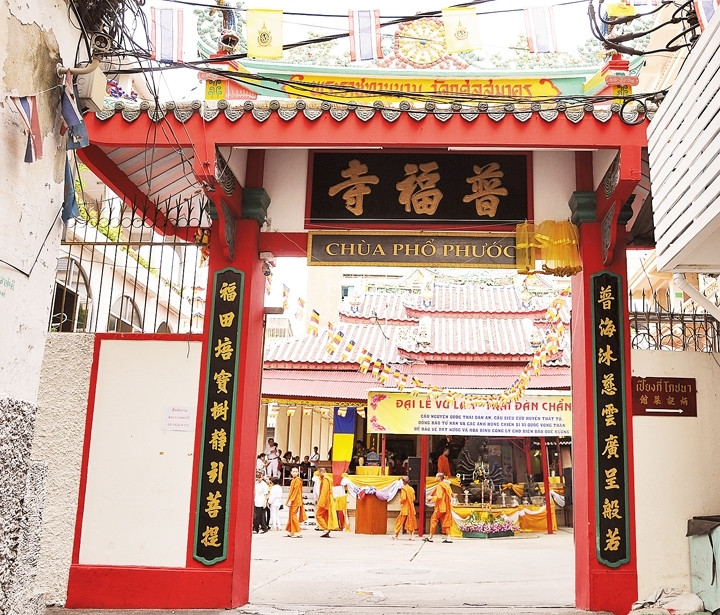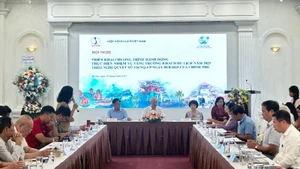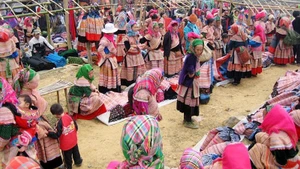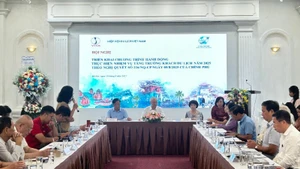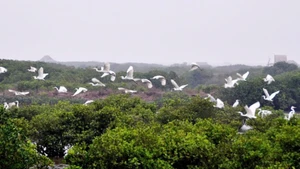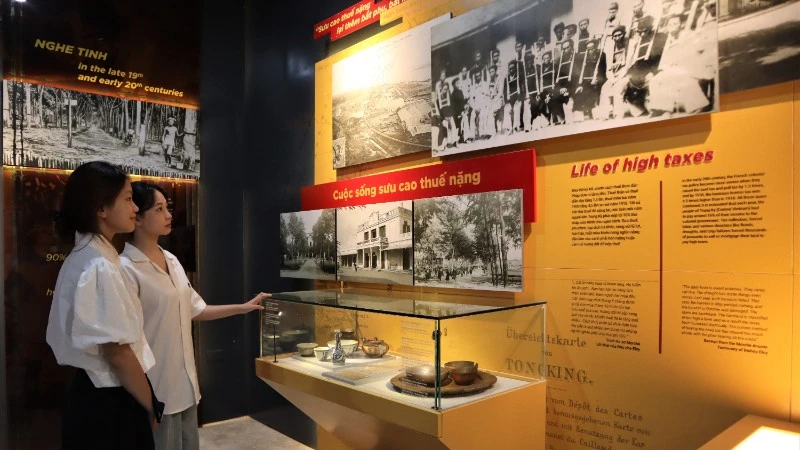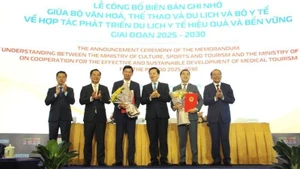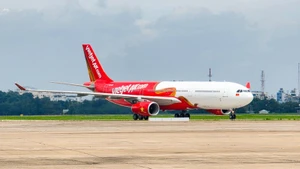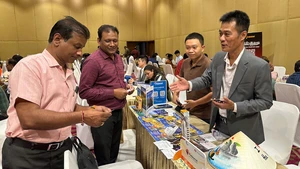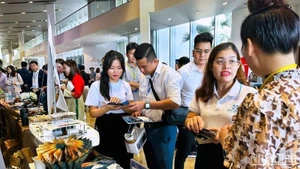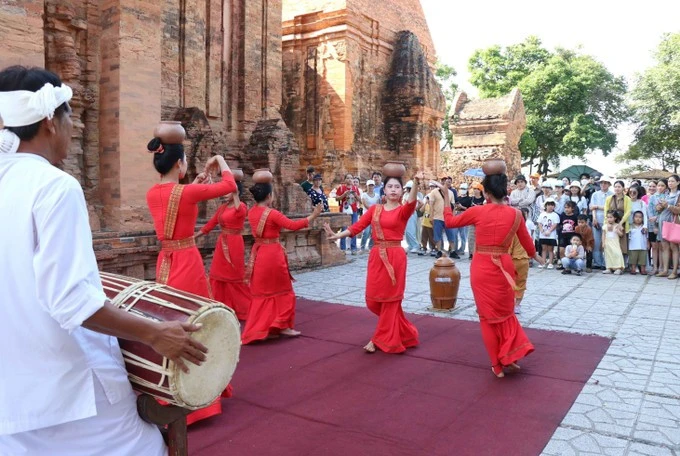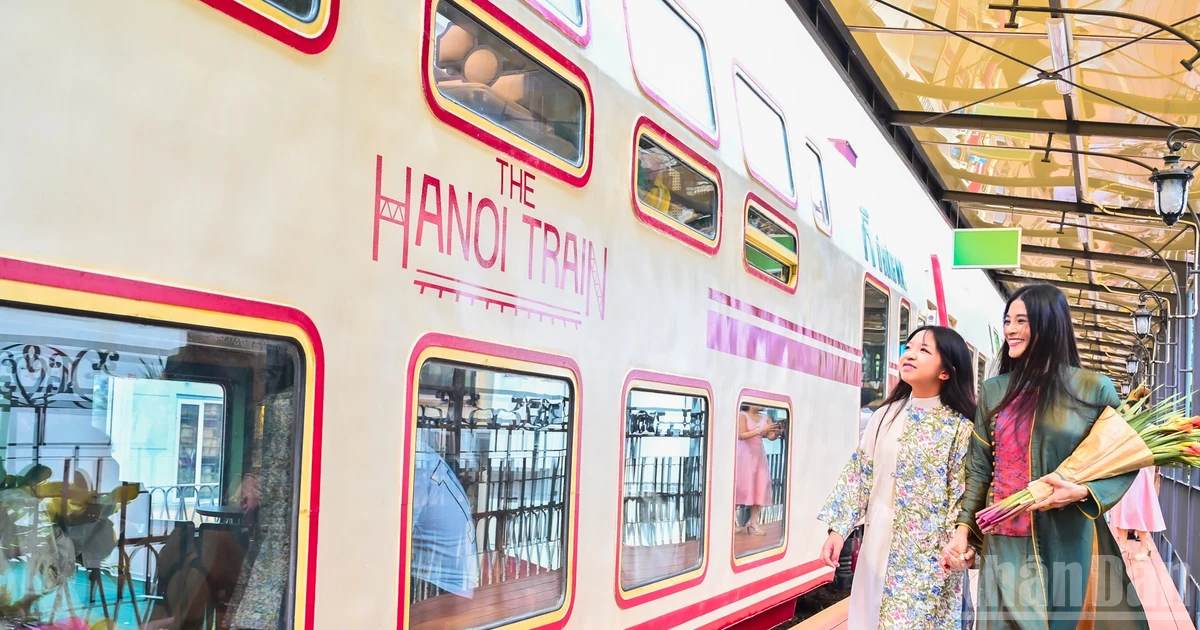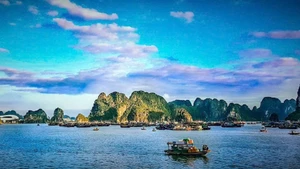When Vietnamese people arrived in Thailand nearly 250 years ago, the first Vietnamese pagodas were built. These Vietnamese pagodas received support from the monarch of Siam, especially Kings Rama III, Rama IV and Rama V.
Since then, traditional Vietnamese Buddhism started to develop in the Kingdom of Thailand, a country where Buddhism was recognized as a state religion and which is followed by approximately 94 percent of the total population.
In 1889, over 100 years after being brought to Thailand, the Buddhist tradition practiced by Vietnamese in the country was officially recognized and named ‘Annamnikaya’ by King Chulalongkorn (Rama V) as one of Buddhist sects of Thailand. Thai Kings themselves gave names to and appointed monks of these Vietnamese-built pagodas, and Annamnikaya became one of the only two Buddhist sects brought from other countries in the kingdom.
Given support from Thai authorities on occasion of celebrating 40 years of diplomatic ties between the two countries (1976 – 2016), the Vietnamese Embassy in Thailand and Vietnamese expats in Thailand held ceremonies to attach nameplates in Vietnamese to six Vietnamese pagodas in Thailand, in addition to Thai names, three of which are located in Bangkok.
Tu Te Pagoda (or ‘Wat Lokanukor’ in Thai) located at No.126 Ratchowong Road, Samphanthawong, Bangkok, built in the 19th century, around the 1850s, the pagoda is the place where President Ho Chi Minh organised revolutionary activities in the Kingdom of Thailand in July, 1928.
The pagoda has become a destination frequented by Thai people. According to Tippawan, a Thai woman, she has a strong attachment to the pagoda, regarding it as her home. She always comes to the pagoda to offer incense, clean and support the pagoda on national holidays. For this reason, Tippawan has an extensive knowledge of the pagoda’s formation and development history. According to her, Vietnamese cultural values are featured throughout Vietnamese pagodas in Bangkok.
Meanwhile, Phui, another Bangkok citizen, shared that he and his family often visit the pagoda to pray for peace. Coming to Tu Te Pagoda, he felt touched and proud that his country, Thailand, was supported Uncle Ho when the President implemented revolutionary activities. Not only Tippawan and Phui, but also many other Thai people and Vietnamese expats in Thailand also frequently visit the pagoda.
Along with Tu Te Pagoda, Pho Phuoc Pagoda (Wat Kusolsamakorn) is also another long-standing pagoda of the Vietnamese people in Thailand. Located 300 metres from Tu Te Pagoda, Pho Phuoc Pagoda is the headquarters of Annamnikaya – the Vietnam Buddhist branch in Thailand. Currently, the pagoda is home to 100 Buddhist monks and nuns, who are learning Buddha’s teachings. The most Venerable Thich Kinh Chieu, who is the head monk at Pho Phuoc Pagoda, is also an overseas Vietnamese expatriate. The pagoda was built in the 1850s, by an overseas Vietnamese, Buddhist monk Thich Vien Man. Around the streets of Bangkok, the resonating Vietnamese chanting offers a sense of peace, especially for Vietnamese expats.
Another Vietnamese pagoda in Bangkok, located at 864 Charoenkrung, Taladnoi, Samphanthawong, Khanh Van pagoda (Wat U Phai Rat Bamrung) is the second Vietnamese-built temple in Thailand, constructed in the late 18th century. In August, 2016, Deputy Prime Minister Vu Duc Dam attached a Vietnamese nameplate to the pagoda on his official visit to Thailand. The pagoda is currently the final resting place of the mummified body of Buddhist monk Thich Pho Sai, who is also an overseas Vietnamese.
Recorded throughout history, during the time his time of ordination, Thailand’s prince Mongkut invited Buddhist monk Thich Chan Hung, who is the head monk at Khanh Van Pagoda, to converse on Buddha’s teachings under Annamnikaya. After ascending to the throne, King Mongkut (Rama IV) has conferred a title on Buddhist monk Thich Chan Hung, who later became the first most Venerable of the Vietnam Buddhist branch in Thailand. In 1878, the Khanh Van Pagoda was granted the name ‘Wat U Phai Rat Bamrung’ by King Chualalongkorn (Rama V) .
